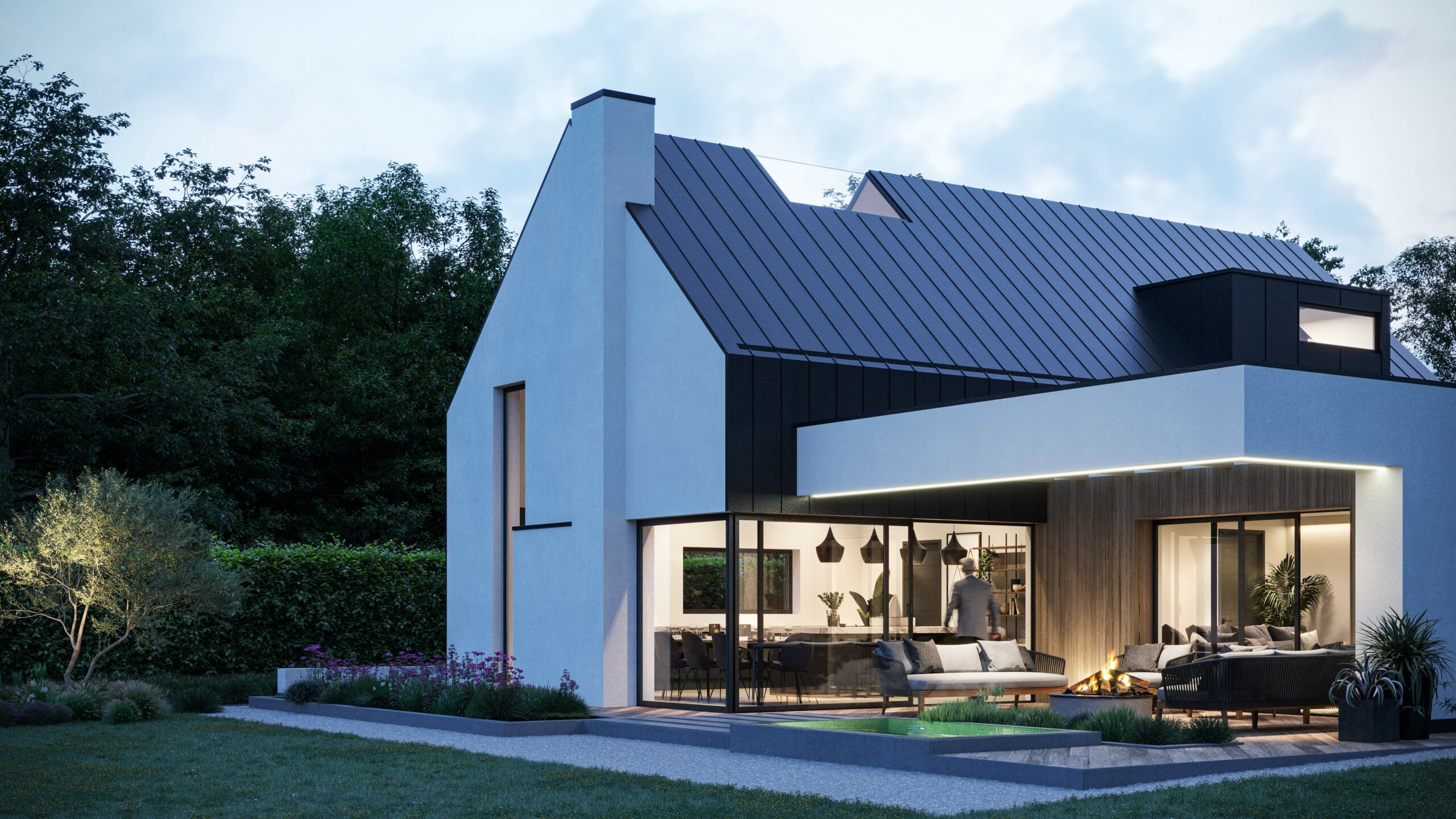If you have spent any time reviewing Green Belt Architectural Practices in the preceding months, you have presumably observed how hard to understand the concept can be.
The public continually demands more complex buildings than in the past. They must serve more purposes, last longer, and require less maintenance and repair. As in the past, they must look attractive. Yet, both building construction and operating costs must be kept within acceptable limits or new construction will cease. To meet this challenge successfully, continual improvements in building design and construction must be made. Designated green belt comprises 1.6 million hectares or 3.95 million acres. This equates to approximately 13% of the land area of England. 10.6% of land within the green belt is defined as urban and developable brownfield sites make up 1.9% of the green belt. In addition, 2% of the green belt could if deemed appropriate, accommodate 2.5 m homes over the next 10 years. When submitting an application for either an extension or a replacement building in the green belt, the applicant will need to provide an assessment comparing the existing and proposed development in terms of footprint, floorspace, volume, height and any other changes in built form. The information provided should also include details of the proportion of the site that is developed/undeveloped and the distribution of development/ hard standing and open space across the site. The use of Green Belt has prevented ‘ribbon’ or ‘strip’ development whereby a continuous but shallow band of development forms along the main roads between towns. The strongly held view that settlements should be maintained as distinct and separate places, has been served by Green Belt designation of the intervening land (or in some cases by the application of quasi Green Belt policies). Green belt architects prepare and facilitate all planning documentation, evidence and applications for green belt planning, including any appeals. They provide an after-care service through construction and/or sale, to ensure town planning compliance is fully documented and to deal with changes or additions as the project progresses. Architects that specialise in the green belt begin with research. The first step is to carry out an inspection of the site to determine the natural conditions and constraints that should be taken into account. This is also the time to check on local authority regulations and requirements or meet with relevant persons to discuss your particular project.
The re-use of buildings can have a number of benefits and will usually not result in a greater impact on the Green Belt. Careful consideration needs to be given to the nature of the proposed use to ensure that the activity it would generate does not result in an impact on the openness of the Green Belt or other forms of impact. In reality, Green Belts do not stop urban areas from growing, they just redistribute that growth into more rural settings. Larger towns and cities develop a commuter belt along main roads/routes and rail links into the city. Collaborative work between the green belt design and planning teams is vital to deliver the best quality submission. Planning consultants assist in procuring and coordinating the various environmental inputs, including noise, traffic, ecology and landscape. Green architecture is a sustainable method of green building design: it is design and construction with the environment in mind. Green architects generally work with the key concepts of creating an energy efficient, environmentally friendly house. Thanks to justification and design-led proposals featuring New Forest National Park Planning the quirks of Green Belt planning stipulations can be managed effectively.
Simpler, Easier And Better
It is a myth that the Green Belt is sacrosanct. Many farms and rural business lie within the Green Belt, this does not prevent them developing their homes and businesses and obtaining planning permissions for this. Our landscapes are diverse and include rural, urban and coastal areas. They are the unique result of the interaction between natural and cultural influences over time. All landscapes matter and are important at a local scale. Green belt architects provide expert, innovative and flexible advice to landowners, developers, community groups, businesses and rural enterprises with an interest in land and property. Their detailed knowledge of the planning and development industry and enthusiastic approach to achieve the best for their clients sets them apart from the competition. New development can bring a number of benefits – assisting farm diversification, supporting the local economy and making beneficial use of an existing resource. However, the countryside and green belt also needs to be protected from inappropriate development which would detract from the rural character and landscape quality of the area. Green Infrastructure refers to a strategically planned and managed network of green spaces and other environmental features vital to the sustainability of any urban area. A green infrastructure approach involves considering different development layouts and densities to provide usable space and deliver meaningful opportunities for multiple functions. Clever design involving Architect London is like negotiating a maze.Green Belt policy is used to ensure that land within the Green Belt is kept permanently open and free of development so that the spread of urban development is contained. However local authorities are taking into account the extent to which a site is previously developed as part of their Local Plan strategy. Without strict guidance, it was predicted that high levels of urban sprawl would dominate the natural context; with new developments consuming all available land as the population rapidly grows. Green belt architects ensure all stakeholders are kept abreast of changes and updates and that they understand any project implications. They can also act as an expert planning witness at public inquiries. Green building extends further than just implementing construction good practices but also includes a scientific examination of the real-world performance of a building. The fundamental aim of Green Belt policy is to prevent urban sprawl by keeping land permanently open. National policy states that inappropriate development, in the Green Belt, which includes the construction of new buildings, should not be approved except in very special circumstances. Can Green Belt Planning Loopholes solve the problems that are inherent in this situation?
Green Belt Planning Permission Relies On The Quality Of Your Design
Architects that specialise in the green belt believe that good design is generated by a thorough analysis of how the spaces they create will be used; whether this is for living, working, shopping, eating or relaxing. Research the area and the local legislation; take the time to work with us and start the conversation with your Local Planning Authority earlier rather than later; and be flexible to new approaches in design, scale, character and materials etc. in order to satisfy the needs of all stakeholders. Gaining planning permission for a Green Belt site can be very complex, and as described above, it’s more likely to be successful if the ‘design is of exceptional quality’. Government pledges to reduce carbon emissions drastically can only be credible with radical rethinking of the ways in which city regions function. Too often, the current policy debate is simplified into polar positions: on one hand to preserve the Green Belt as it is, on the other to relax the policy to accommodate housing and urban growth. Green Belts can be implemented through planning controls, legal instruments or land purchase. Land purchase is the most effective, but is likely to be prohibitively expensive unless land can be secured at agricul- tural prices. Conducting viability appraisals with GreenBelt Land is useful from the outset of a project.Green belt building designers are extremely environmentally conscious and they help to minimise the carbon footprint a new build can create by using local materials and local trades. A green belt architects' up-to-date knowledge of planning policy and case law is instrumental in their approach to seek to identify a route of opportunity (where one exists). A green belt architect considers the energy efficiency of every structure they design and build. They view each client and project as a complete picture, taking into consideration all the factors that go into and around a building, including its budget, delivery method, schedule, functionality, environmental footprint, infrastructure requirements and long term sustainability goals. Any development proposal in the Green Belt which can be demonstrated to be necessary and required for the furtherance of agriculture, horticulture, forestry, recreation or other appropriate Green Belt uses, or where development forms part of a larger proposal for the rehabilitation or change of use of disused or redundant traditional buildings where this consolidates such groups, will generally be supported subject to appropriate criteria being met. Over a century on from its creation, there are compelling arguments for reviewing the Green Belt. These should not, however, be concerned with short-term pressures to accommodate urban growth. Instead they should ask bigger questions regarding the nature of the relationship between the city and its regional landscape, about adaption and resilience to climate change, about social equality and the strategic roles of planning and fiscal management. A well-thought-out strategy appertaining to Net Zero Architect can offer leaps and bounds in improvements.
Architects Specialising In The Green Belt
Many of the practices and principles used in sustainable architecture are rooted in ancient building techniques that were transformed with the rise of modern materials and mass production in the industrial age. Recent government land use statistics show that housing development in the Green Belt has increased for another consecutive year, despite the government’s commitment to protecting the Green Belt. Adopting green architecture practices in how we design, build and power edifices can significantly reduce our carbon footprint. But constructing eco friendly houses using green building materials won't be enough on its own. We would also need to rein in overbuilding to benefit the environment. Stumble upon more facts appertaining to Green Belt Architectural Practices at this Wikipedia web page.Related Articles:
Additional Insight About Green Belt Architectural DesignersExtra Insight About Green Belt Architectural Companies
Background Information With Regard To Green Belt Planning Loopholes
Supplementary Findings With Regard To Green Belt Architectural Practices
More Background Information With Regard To Green Belt Architectural Companies
More Background Information On Net Zero Architects
Background Findings About Green Belt Architectural Practices














